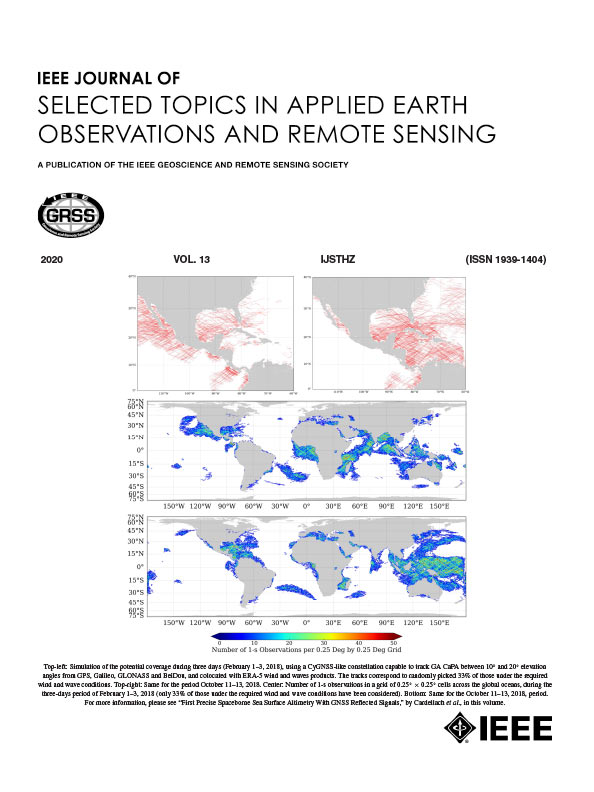SD2GC-F: Enhancing Building Change Detection With Sequential Detection to Graph Comparison Framework
IF 5.3
2区 地球科学
Q1 ENGINEERING, ELECTRICAL & ELECTRONIC
IEEE Journal of Selected Topics in Applied Earth Observations and Remote Sensing
Pub Date : 2025-08-22
DOI:10.1109/JSTARS.2025.3601823
引用次数: 0
Abstract
Accurately detecting building changes based on high-resolution remote sensing imagery remains technically challenging owing to positional inconsistencies and geometric distortions. To address these limitations, this study proposes a novel framework that combines deep learning-based building detection with graph-based structure comparison. Detectron2, an object detection model, is employed to extract building instances and derive accurate node positions by computing the center points from rotated bounding boxes. The minimum spanning tree algorithm is then applied to create building graphs from these nodes based on the connectivity between adjacent buildings. Subsequent analysis of structural variations within this graph enables change detection and identifies which building changes will concomitantly alter their links to neighboring buildings. Experimental results across synthetic and real-world datasets (including off-nadir imagery) confirm that the proposed method effectively captures building changes in complex urban environments. Notably, it achieved high change-detection accuracy, particularly in scenarios involving relief displacement and perspective distortion, wherein conventional methods often yield high false positive rates. This approach offers practical utility for large-scale urban monitoring and addresses the key challenges posed by complex positional discrepancies and environmental variations in remote sensing imagery.SD2GC-F:用顺序检测到图比较框架增强建筑物变化检测
由于位置不一致和几何扭曲,基于高分辨率遥感图像准确检测建筑物变化在技术上仍然具有挑战性。为了解决这些限制,本研究提出了一种将基于深度学习的建筑检测与基于图的结构比较相结合的新框架。利用目标检测模型Detectron2提取建筑实例,并通过计算旋转边界框的中心点得到准确的节点位置。然后根据相邻建筑物之间的连通性,应用最小生成树算法从这些节点创建建筑物图。随后对该图中结构变化的分析可以进行变化检测,并确定哪些建筑变化将同时改变它们与邻近建筑的联系。合成数据集和真实世界数据集(包括非最低点图像)的实验结果证实,所提出的方法有效地捕获了复杂城市环境中的建筑变化。值得注意的是,它实现了很高的变化检测精度,特别是在涉及地形位移和视角失真的情况下,而传统方法通常会产生很高的误报率。该方法为大规模城市监测提供了实用价值,并解决了遥感图像中复杂位置差异和环境变化带来的关键挑战。
本文章由计算机程序翻译,如有差异,请以英文原文为准。
求助全文
约1分钟内获得全文
求助全文
来源期刊
CiteScore
9.30
自引率
10.90%
发文量
563
审稿时长
4.7 months
期刊介绍:
The IEEE Journal of Selected Topics in Applied Earth Observations and Remote Sensing addresses the growing field of applications in Earth observations and remote sensing, and also provides a venue for the rapidly expanding special issues that are being sponsored by the IEEE Geosciences and Remote Sensing Society. The journal draws upon the experience of the highly successful “IEEE Transactions on Geoscience and Remote Sensing” and provide a complementary medium for the wide range of topics in applied earth observations. The ‘Applications’ areas encompasses the societal benefit areas of the Global Earth Observations Systems of Systems (GEOSS) program. Through deliberations over two years, ministers from 50 countries agreed to identify nine areas where Earth observation could positively impact the quality of life and health of their respective countries. Some of these are areas not traditionally addressed in the IEEE context. These include biodiversity, health and climate. Yet it is the skill sets of IEEE members, in areas such as observations, communications, computers, signal processing, standards and ocean engineering, that form the technical underpinnings of GEOSS. Thus, the Journal attracts a broad range of interests that serves both present members in new ways and expands the IEEE visibility into new areas.

 求助内容:
求助内容: 应助结果提醒方式:
应助结果提醒方式:


